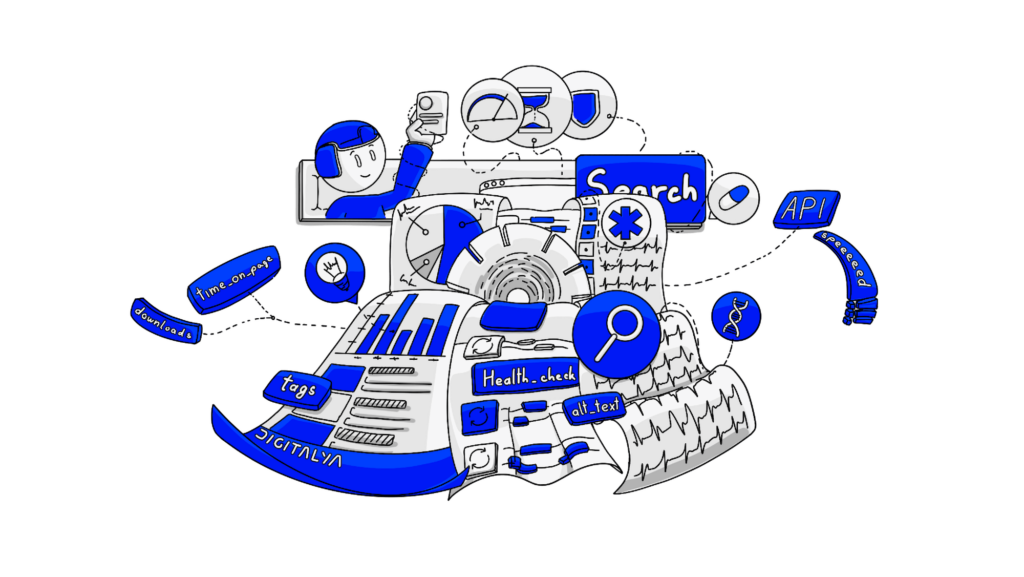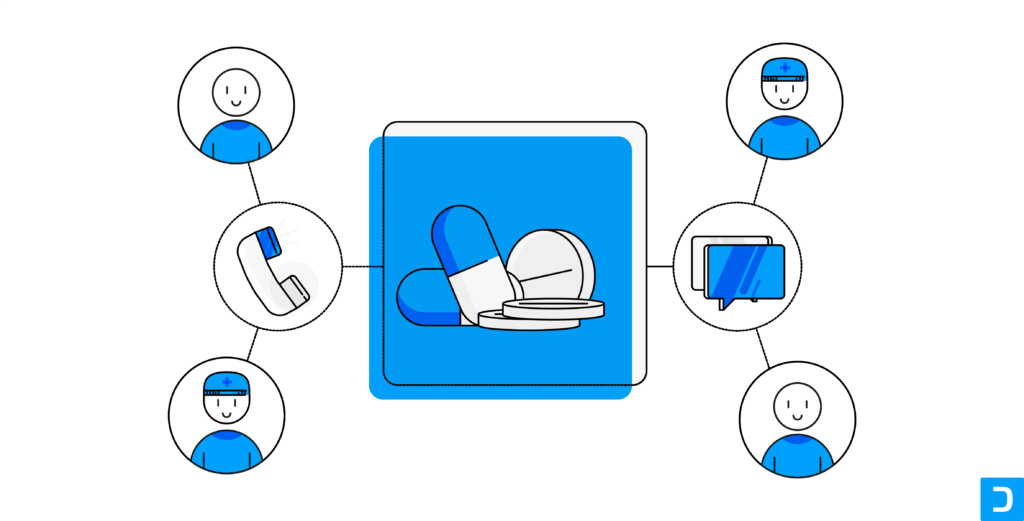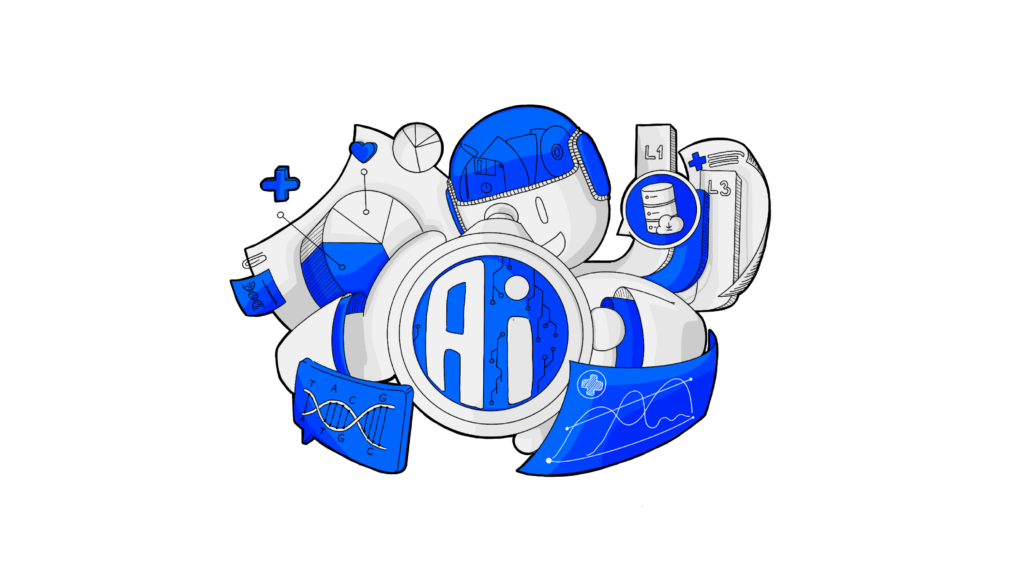We live in a blessed period and are more connected than ever, especially digitally. As a result, we have at least one application for almost everything we can think about mobile apps, web apps, tv apps, and IoT apps.
Our phones are connected to our smartwatch, tv, and even to our entire house, from locks to our vacuum, coffee maker, and lights. To ensure this level of connectivity, we need different applications that make our life easier. Applications are all around us, so let’s see how to create an app from scratch.
1. I want to create an app. Where do I start?
Once we decide to create an application, the struggle begins. What kind of application do I want to build? Is it a mobile app? If the answer is yes, then should I build an IOS application or an android app? Maybe I want both, but wait: what is my application going to do…?
Awesome, now I am overwhelmed, and I didn’t even start to do something for my app. To make things a lot easier, I’ve computed a guideline that will help you put in place the steps for building an excellent app.
2. Generate an app idea
We are often stuck in this step because we always try to come up with a truly unique idea that will revolutionize your industry. This is the dream, and it will rarely happen.
Before creating a new app, the first step is to define what you would like your application to do. If you already have an idea, then you are already one step ahead. If you do not, this step is for you, and it will help you come up with your idea.
According to statista.com, there are over 5.7 million applications in the Google Play and Apple App Store combined. Many of these applications are variations or combinations of existing older applications—the goal: is to create something unique from an existing product.

To generate some app ideas, we will go through 3 different approaches: Revamp the old, Solve some aching “world problems,” and My selfish approach.
Revamp the old
One of the most used application categories is games. Nowadays there are a lot of games, some more interesting than others. One of the approaches in this industry is to take a classic existing app and add a new spin, which will guarantee you will have a buzz.
Have you heard about Tetris or Sudoku? These are classic games from my childhood, and sometimes I still have a relaxing time playing them. What about Woodoku? This is a game that combines elements from Sudoku and Tetris, and it is a woodblock puzzle that asks you to fill columns, rows, and squares to clear the board.
This is just an example. Maybe you do not want to build a mobile game, and this is alright. Nevertheless, you can use this technique: think of some applications you are using and are not the perfect fit for you. What would you change? Can you combine the four applications you are using into one?
Solve some aching “world problems”
You can find a new application idea by looking around you. What are the problems the world or the people close to you are having? Can you approach these issues and come up with a solution?
I think that you could. One of the main problems that we encounter nowadays is a very short attention span. We live in an era where we have distractions everywhere: social media notifications on our phones, smartwatch, laptops, and even TVs. So an application that approaches this problem might be the right one.
My selfish approach
The reason I called this technique “My selfish approach” is because the light is on you. Do you have something that bothers you? Maybe you use an app that you like, but there are not all the features you want. Or you have a need that nothing on the market can fulfill.
If you find yourself in one of the situations above, there is a very high chance other people do too. You could be just on the right path of creating the new big thing.
3. Do market research
You have gone through the process, and now you have an excellent idea, so what is next in your journey of “how to create an app from scratch”? Some market research.
This is a crucial step in your app development process. In this step, you define if there is a market for your future product, and at the same time, you can establish who your target market is.
If you are revamping an existing application, the easiest way to do your initial research is to understand your current clients’ needs.
If you are creating something new, one crucial thing is to know your target market and competition. Who is your potential client base? What are the main competitors in this area? How can you differentiate?
Having an answer to all these questions will help you better understand the available market potential in your area. In addition, by knowing your competitors, you can study what they’ve done and establish how your product is different and what your selling points are.
The best timeframe to do the market research is before starting to do any development of your application. This way, you will be able to save precious development time, meaning money.
4. Validate your idea
You’ve done your research, and now you have a potential clients base, you know your competitor, and at the same time, you’ve established the key differentiating aspects of your product. What’s next?
Let’s validate our idea. There’re many techniques to do that. Depending on your budget, you could contract an external agency that can help you define the main characteristics of your app and build even a visual identity of your product. Many companies have different programs, such as a Design Sprint Workshop, where people from various areas are involved, such as UI/UX, Marketing, Development, and even more if needed. If you have the budget, this might be a good approach because you will work with professionals in the industry that will bring you valuable input based on experience.
If we encounter a situation where we have a minimal budget to start with, what can we do in this step? I will present a different approach that one can take to gather valuable information from the idea validation journey. The process is relatively simple to understand and consists of four steps:
- 30 seconds or less pitch
Can you present your app’s core functionality and purpose in a 30 seconds speech? At first, of course not. You are passionate, and everything is essential in your application. Nevertheless, you have to understand that you might be the only one that sees that at this moment. The attention span of someone is short, and you need the “hook,” the starter of the conversation, that will make one want to know more.
To get there, I have a technique you could use. First, take a piece of paper and write ten or more important words or aspects about your idea. Then, from all these features, keep the most important five ones. After you achieve that, select your top 3 ones. It won’t be easy, and I recommend taking your time with this step.
Now that you have your main features, the next step is to write a speech and a description of your application that will emphasize these features.
- The best speech of your life
You might be very comfortable with public speaking, and you might have the so-called charisma that will let you take over the room. Unfortunately, however, the majority of us are not like that.
What you can do is practice a lot. For example, you could set up a camera and film yourself while presenting your application. Stop, take notes, and repeat. In time you will get better at this.
- Test your idea and pitch it to your inner circle
Get your closest friends and family to listen to you. Ask them for feedback and tell them to be honest and brutal. Dare them to take apart your idea and presentation. It won’t be easy for you, but it will prepare you for the next step.
- Bring your pitch to the world
The fun just started. If you arrive at this step, you are ready for the challenge. Present your idea wherever you can and ask for feedback. Some places that you could approach are different meetups and seminaries, innovation accelerators, and even social media entrepreneurs’ groups and rooms.
5. Find the best ways to implement your idea
Until this step, you have gathered a lot of information. Now you should know if your application is a web, mobile, or even a hybrid application. You have an idea related to the significant functionalities you think are essential for your application, and the natural next step would be to start building your application.
Unfortunately, it is not this easy. First, you will need a technical brief to provide to different companies to estimate your minimum viable product. Second, even if you are building the application in-house, you will still need a set of specifications for your team to use.
If you are a technical person, it will be easy to define a list of specs. If you are not, an excellent way to start is to describe the functionality you want to achieve using user stories. They are easy to define and understand once you learn the basics. At the same time, they are the standard used in agile development environments.
The next step would be to describe how your application should look, from the color scheme to the overall look and feel. If you already have access to UI/UX services, then it is easy to sketch your vision. However, if you do not have such services already, a pen and some paper are the next best thing. This way, you can roughly sketch the way you see your application.
6. Develop your app
If you arrived here, you already know what type of application you would like to develop. However, regardless of whether you want a mobile application or a web application, one of the most important is the team you choose to work with.
If you are creating everything in-house, you should be aware that you’ll need to do a lot of work besides the project, such as finding the right persons for the project, managing their expectations, and offering them support to learn and grow. Next, I will discuss the other option, selecting a web application development or mobile apps development agency.
Depending on your needs, web development, mobile development, or both, and your budget, you have to find the right partner for you. If you are flexible in choosing the technology to be used, then you have a large pool of agencies to choose from.
One way to find software development agencies is to look into review platforms to check their previous work. One of these platforms is Clutch. This platform has different categories and even lists top agencies from other areas. Besides that, it also has some price ranges from agencies and their projects.
Once you find the right team, the journey begins, and your application might be available for testing in a matter of weeks, depending on its size.
7. Test the app
We have the MVP ready. That’s awesome; what a journey. Sorry to be the one to tell you that the work is not yet finished. Next, we have to test our application. We can see the testing process from two perspectives: the QA process and application usability and flow testing.
In summary, the QA process means to be sure that the application is fully functional on the devices set at the beginning to be compatible. QA stands for Quality Assurance. For example, if you built a mobile application for both Google Play and Apple App Store, it is not enough to test it only on one device. You have to do thorough testing on multiple brands and models of phones and also on multiple operating system versions. This way, you ensure that your app behaves appropriately on a large spectrum of devices.
Application usability and flow testing, I understand that: testing the flow of the application to be sure that it is user-friendly for your clients. You and your team already know the app, and it seems easy for you, but how about your potential users? You could do this step by selecting some users, maybe persons close to you, and enroll them in your application. Ask for honest feedback, and based on that, you can improve your app before the official launch.
8. Market/promote the app
You’ve finished your application, made the necessary tests, and added all the adjustments needed from the feedback you have received. You might have a fantastic app, but that does not translate into customers.
Suppose you “Revamp the old” and you are proposing a different solution for an already existing market. In that case, one of the issues you might face is the reluctance of the people to change their existing providers. It is often for people to fear the unknown and to try new things.
The answer to these issues is marketing your app. The best option you have regarding this is to hire an experienced marketing person in-house or partner with a marketing agency. You could do that as soon as possible. This way, you can make marketing-related changes to your app, from the look and feel of the application to SEO changes, and you can even build some gamification systems in place.
If you do not have access to a marketer, you could do some things to promote your app. Depending on the application purpose and target audience, you could:
- Make a buzz by having an awesome app launch party with a select group of people
- Partner with influencers in your area
- Develop great content and have visibility on major social media platforms from Linkedin, Facebook, Instagram, Twitter, and maybe even TikTok.
9. How much does it cost to build an app?
Every entrepreneur should and often ask one of the questions: “How much does it cost to build an app?”. You will rarely get a clear answer to this question, and many times you could also get substantial budget ranges, for example, from $20,000 to $500,000. This is not a range you can prepare for. In the following paragraphs, I will make a breakdown to help you better understand the budget involved in developing an application.
There’re many pieces of research made on this topic, and the central aspect described is: it depends on the application, region of the world, the experience of the team, and the tech stack that is used. All are valid aspects when building a project. Goodfirms created a very detailed recent study related to this topic. Further on, I will summarise their findings.
There’re two types of projects: high-end projects and economic projects.
High-end projects are usually sophisticated products that need experienced developers and sometimes even an exotic tech stack. In addition, these types of projects are known to require advanced custom app development services. Usually, the average hourly rate for this type of project is around $100/Hr.
Economic projects usually are developed in a well-known and spread technology. At the same time, they are simpler to develop, and the average hourly rate is around $65/Hr.
We’ve talked about hourly rates. This is because the cost of a project is computed by multiplying the involved time with the daily rate. By taking this reasoning into account and using the rates for an economic project, we can have three categories of projects:
- Simple applications: these are usually between 4.5 and 11 weeks determining an estimated cost of $24,830 to $59,150
- Complex applications: these are typically between 7 to 16 weeks determining an estimated cost of $36,107.5 to $85,150
- Advanced applications: these are generally between 11.5 to 26 weeks determining an estimated cost of $59,507.5 to $137,150
10. What skills you should have to create an app from scratch
Until now, we have talked about how to select an idea for an application, choose your target market, know your competition, validation of your idea, and at the same time, how to choose the proper web development or mobile apps development team and what are the involved costs.
One other alternative is to build your own apps. Let’s see what you need to do. The most important thing: if you have zero experience developing apps or no technical background, then this approach might not be the right one for you.
If you are a technical person, especially a developer with decent coding skills, you have all the chances to do a great job. The first step is to define the tech stack you want to use. For example, if you’re going to build both iOS and Android apps, your best choice would be a cross-platform programming language such as React Native, Vue Native, or Flutter. The other alternative would be to build native mobile apps for both platforms. If you go for a web application, you could choose from React, Vue, and Angular as frontend technology.
Nevertheless, the best choice for the backend architecture is to build a REST API architecture. This way, you can connect both a mobile and a web application to your product’s core functionalities. To create a REST API, you have many solutions and decisions to take: Laravel vs Django or maybe NodeJs vs Go. You can choose any solution that suits your needs. Keep in mind that each programming language and framework has good and also bad features. There wasn’t developed a perfect solution yet.
11. Top challenges when creating an app from scratch
When you create an app from scratch, you encounter many challenges along the way. Some are easier to overcome than others. We will go through some of the most common five challenges that usually appear, in this process, regardless of the app idea or type.
- Not an MVP – it is a fine line between minimum viable product functionality and a useless app. When deciding on the feature list, you have to find the perfect balance between necessity and the shiny new thing.
- Development team delays – you have defined the best plan, talked with your teams, and established the launch date. You already have marketing efforts in place but wait; the development is not ready. As you will often hear, there will always be a difference between estimations and the actual work.
- 3rd party delays – if you are building a mobile app, you have to consider that you would need a review from Google or Apple to publish your application. In some cases, the review period until your app is published might take up to two weeks.
- Not good enough mindset – it is our application, and we’ve worked a lot to arrive close to the finish line. But wait … Not everything is how we expect it to be; we want to achieve the perfect version before launch. Unfortunately, this is one of the most common traps, especially for first-timer application owners.
- A similar app was just launched – this is a hard one, and it might happen sometime. In this case, you have to assess if your app is still unique enough. If not, you might need to go back to the process at the beginning and revamp your app.
If you arrived here, then good job. You have the starting point to build your new successful product step by step. If you trust the process and do the work, you might be one step closer to the next big thing. So start building your app today.










